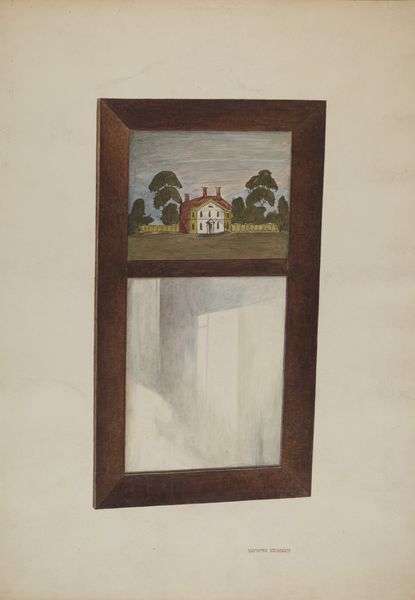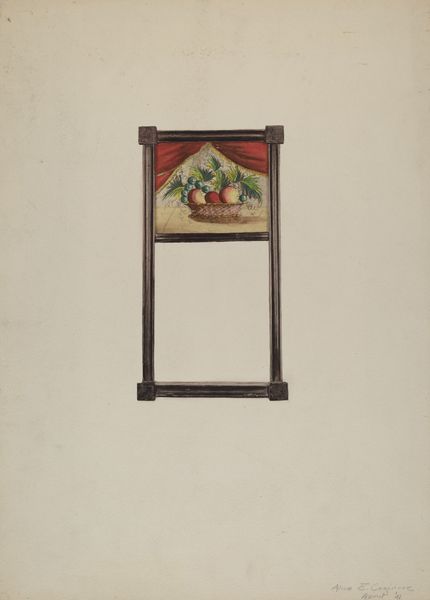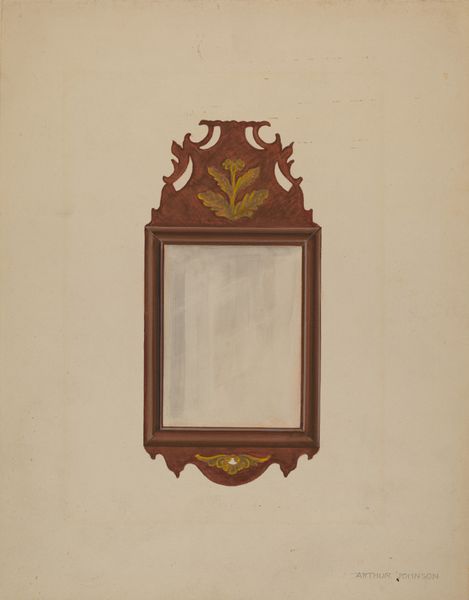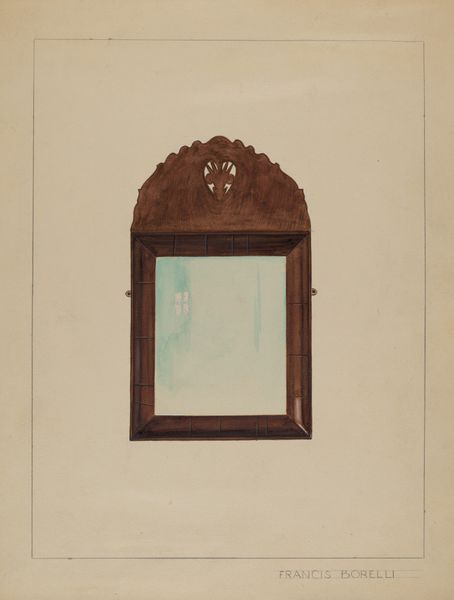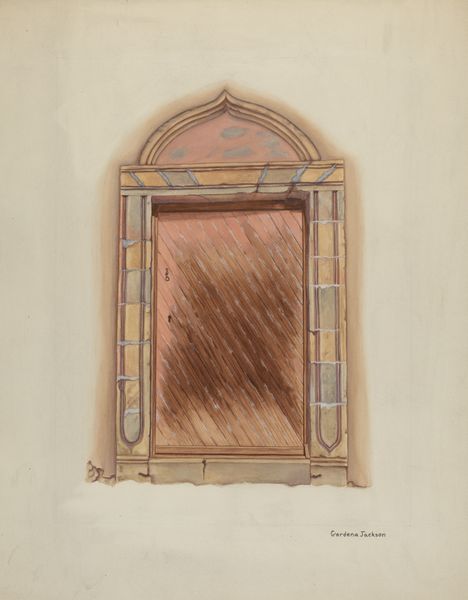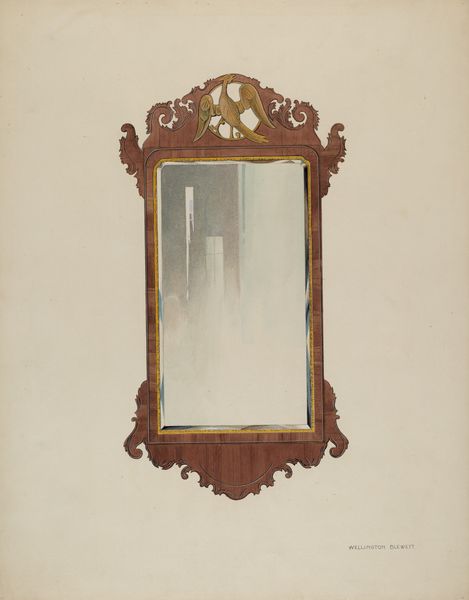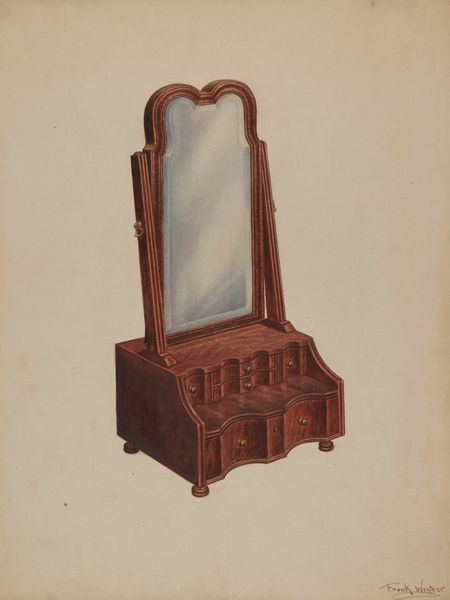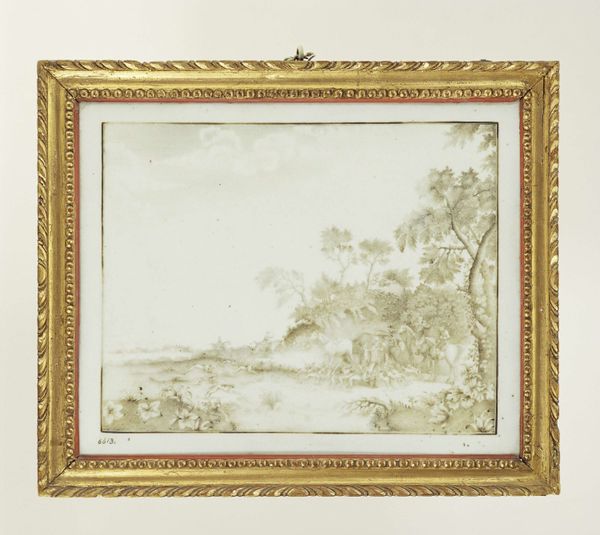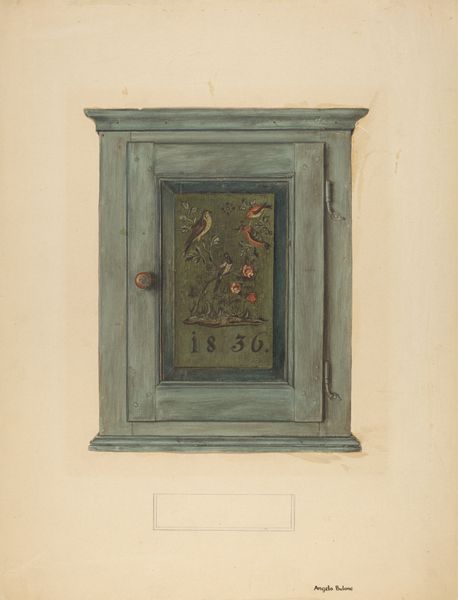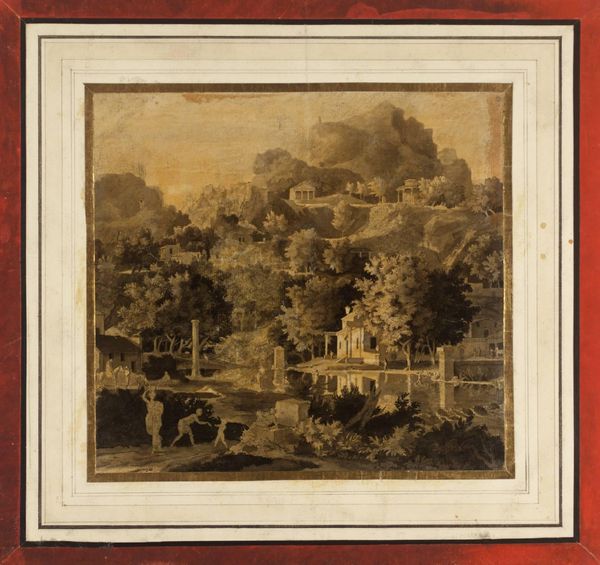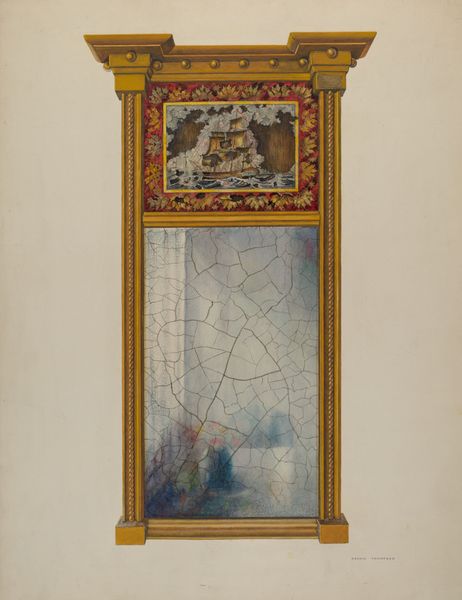
drawing, coloured-pencil, tempera
#
drawing
#
coloured-pencil
#
tempera
#
landscape
#
coloured pencil
#
realism
Dimensions: overall: 60.8 x 45.4 cm (23 15/16 x 17 7/8 in.) Original IAD Object: 19"high; 11"wide; 1 1/2"deep
Copyright: National Gallery of Art: CC0 1.0
Curator: What strikes me first about Oscar Bluhme's "Painted Mirror," from 1940, is how utterly unconventional it is to combine mirror with landscape in a single pictorial plane. What do you make of it? Editor: The mirror creates an unsettling effect. Its fractured surface reflecting nothing, except perhaps distorted traces, juxtaposed with the serene, idyllic landscape at the top is an interesting contrast. The materials—tempera and colored pencil—lend an unusual texture. Curator: It makes you wonder, doesn't it? Was Bluhme reflecting on a particular moment? The late 30s and early 40s saw the rise of totalitarian regimes across Europe and a spreading sense of fear as countries teetered on the brink of world war. I wonder, is he inviting us to reflect on the illusion of beauty? Editor: An intriguing point, and while that might hold merit, formally, the separation between the landscape and the reflective surface creates an inescapable binary. We are dealing with two distinct pictorial zones. The frame’s decorative elements also contribute—the repeating cylinders provide a rhythm that contains the visual experience, making the overall composition more structured. Curator: The very use of a mirror also points to the commodification of the human body in the age of modernity. We're constantly being asked to reflect on ourselves, both literally and figuratively. We have been turned into objects that require appraisal! The landscape element almost acts as a distraction from this narcissistic culture. Editor: Interesting! I tend to see that quaint landscape and the somewhat naive depiction of architecture as being almost dream-like, floating just above a plane of distorted reality. Is there an aspiration toward idealism in the face of the unavoidable fissures and deterioration we see in the reflecting glass? Curator: Whether critiquing culture, reflecting trauma, or aspiring to idealism, Bluhme challenges the established social and cultural concepts and expectations. Editor: It's undeniable; "Painted Mirror" refuses to let viewers settle on easy interpretations.
Comments
No comments
Be the first to comment and join the conversation on the ultimate creative platform.
